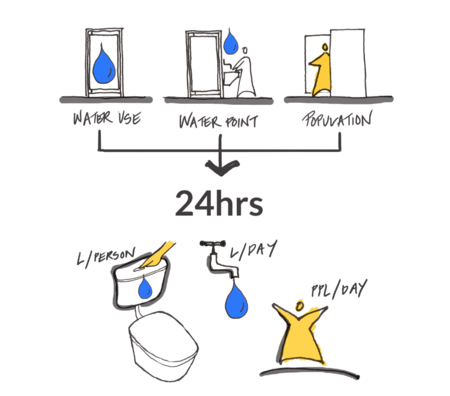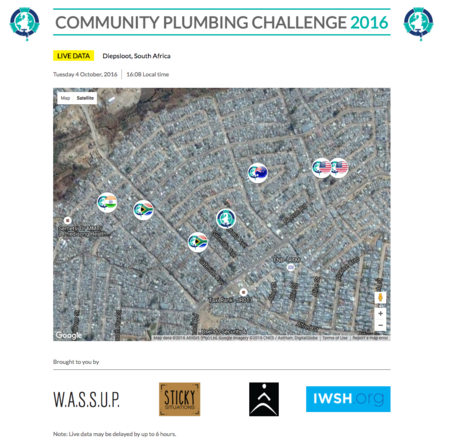Data logging in Diepsloot
The CPC/Diepsloot Logging Project is accumulating data from the toilets upgraded during the event. Data is currently being collected on water use, water efficiency and cubicle use by logging water meters and door swing to each toilet. Infrared sensors also help confirm presence in the toilet cubicle without compromising privacy and autonomy of users. Collecting cubicle data (eg door opening) over time as evidence of the value of the process of improvement (for example more people using the units but less water consumed after upgrades).
Loggers were installed on 5 of the toilets improved and relocated back to Diepsloot. A “control” was also fitted with a logging to an unimproved toilet for comparison. Data collected over 3 months can then provide evidence for an evaluation of the upgrade process and the offer the best tracking of the success of the teams solutions. These results will be shown on the HH website and during the World Plumbing Council conference in Cape Town in September.

HH team dedicated to the logging component of the project worked with ETM Pacific to create a logging solution that could be easily installed, travel from Sydney to ZA in standard luggage, and transmit the data via mobile technology to the HH servers. A google map was also created by Sean Kearney of IAPMO/ IWSH with Sticky Situations and WASSUP to locate all existing toilets in District 1 in Diepsloot with the vision to include crowdsourced data for the WASSUP team to respond to leaks quickly.
Click on the image to access the live data
With the data collected, HH together with WASSUP will be able to:
- Understand possible design features that need review or show success
- As an example, possible scenario could be that the cistern begins to fail after 5000 flushes, or on average every 3 months. Hence WASSUP group could aim for a maintenance schedule every 2 months to repair or replace the flush point or review the cistern specification.
- Gain time based data which will help identify best times for routine maintenance with minimal interruption to local residents use.
- Use live data to alert WASSUP if a toilet is using its typical daily water use rapidly, identifying a possible leak or failure immediately.
- Learn more about hand washing activity per toilet use and other demands on the communal water points.
- Monitor health issues – increase in water use not relating to leaks could also suggest alternative activity or spike in gut health issues in an area.
FINAL REPORT
Click here to download the full logging report.
Project Partners: IWSH










